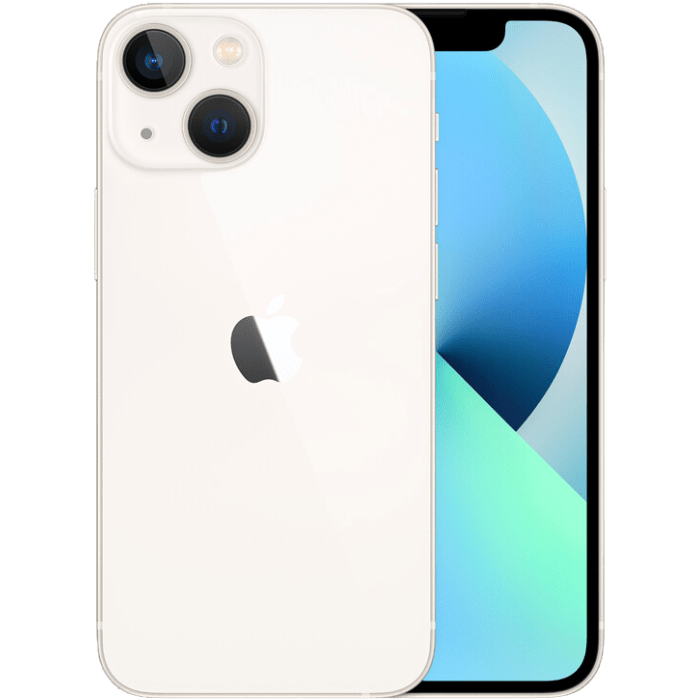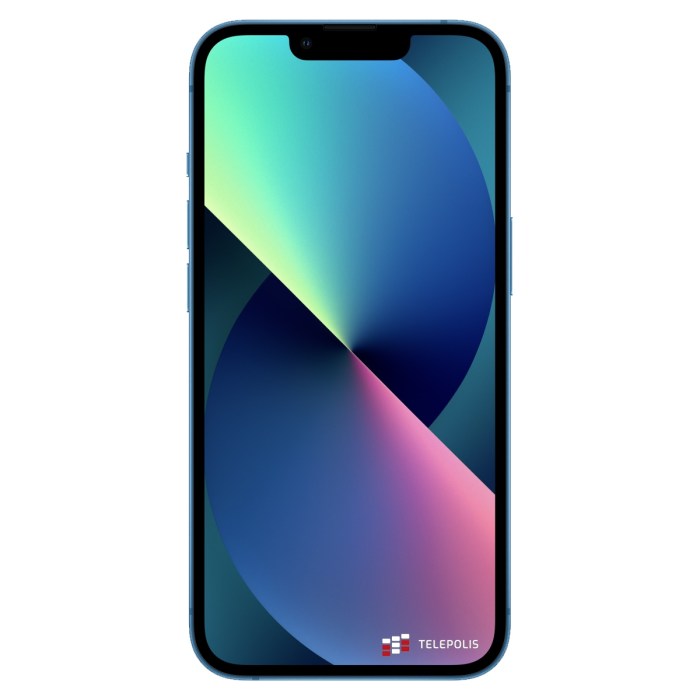Goodbye Apple iPhone Mini. The tiny titan, once lauded for its portability, has met its maker. Its departure leaves a void in the smartphone market, a space occupied by a phone that prioritized pocketability above all else. But why did Apple pull the plug on its pint-sized powerhouse? Was it a lack of demand, insurmountable engineering hurdles, or something else entirely? Let’s dive into the story of the iPhone mini’s surprisingly short reign and explore the ripple effects of its demise.
From its initial launch to its quiet exit, the iPhone mini’s journey is a fascinating case study in market forces, design philosophy, and the ever-evolving landscape of consumer electronics. We’ll examine its unique features, compare its sales to its larger siblings, and delve into the perspectives of users who loved—and perhaps mourned—its compact form factor. We’ll even peek into the crystal ball to see if the future holds any hope for the return of the compact king.
The iPhone Mini’s Legacy
The iPhone mini, a bold experiment in shrinking the flagship iPhone experience, left an undeniable mark on Apple’s history, albeit a short one. Its legacy isn’t defined by massive sales figures, but rather by its unique attempt to cater to a specific niche: users who craved a powerful smartphone in a compact package. Its impact can be seen in the ongoing discussion surrounding phone size and the continued demand for smaller, more manageable devices.
The initial market reception to the iPhone 12 mini was a mixed bag. While many lauded its portability and one-handed usability, sales fell short of Apple’s expectations. This led to speculation about the future of the mini line, a speculation ultimately confirmed with the absence of a mini model in the iPhone 14 lineup. However, the unwavering loyalty of its dedicated fanbase, who valued its compact form factor above all else, speaks volumes about the device’s unique appeal.
iPhone Mini Models: Specifications and Features
The iPhone mini line consisted of only two models: the iPhone 12 mini and the iPhone 13 mini. Both shared a remarkably similar design language, emphasizing compactness without compromising on key features. The iPhone 12 mini boasted a 5.4-inch Super Retina XDR display, powered by the A14 Bionic chip, and featured dual rear cameras. Its successor, the iPhone 13 mini, retained the same screen size but benefited from an upgraded A15 Bionic chip and camera improvements, including sensor-shift optical image stabilization. Both offered 5G connectivity and a range of storage options. While specifications differed slightly, the core experience remained consistent: a premium iPhone experience in a remarkably small form factor.
Design Philosophy Compared to Other iPhone Models
The iPhone mini models stood in stark contrast to the prevailing trend of ever-increasing screen sizes in the smartphone market. While the iPhone Pro Max models embraced the “bigger is better” philosophy, the mini models championed a return to a more manageable size. This design philosophy prioritized one-handed usability and pocket-friendliness, appealing to users who found larger iPhones cumbersome. This design choice differentiated it from other iPhone models, highlighting a focus on a specific user preference often overlooked by other manufacturers.
Timeline of Significant Events
- October 2020: The iPhone 12 mini is unveiled alongside the iPhone 12, iPhone 12 Pro, and iPhone 12 Pro Max.
- September 2021: The iPhone 13 mini is released, featuring upgraded internals and camera improvements.
- September 2022: Apple announces the iPhone 14 lineup, notably omitting a mini model, signaling the end of the iPhone mini line.
Reasons for Discontinuation
The iPhone mini’s untimely demise wasn’t a sudden shock to tech analysts, but it certainly left a void for those who craved a truly pocketable powerhouse. While Apple touted its innovation, the reality was a complex interplay of factors that ultimately sealed the mini’s fate. It wasn’t just about a single failing; it was a perfect storm of challenges.
The primary reason for the iPhone mini’s discontinuation boils down to a simple equation: demand versus production viability. Apple, a company renowned for its meticulous market analysis, realized that the smaller phone, despite its devoted fanbase, wasn’t selling in numbers that justified its continued production. This wasn’t a matter of a flawed product, but a mismatch between a niche market and the cost of creating and maintaining a separate product line.
Challenges in Balancing Miniaturization, Performance, and Battery Life
Shrinking a phone to the iPhone mini’s dimensions while maintaining flagship performance and decent battery life proved incredibly difficult. The smaller form factor inherently limited battery capacity, resulting in less screen-on time compared to larger iPhone models. While Apple made impressive strides in power efficiency with its A-series chips, the limitations of physical space ultimately restricted the battery’s size, leading to complaints about battery life from users. This was a classic engineering trade-off; smaller size necessitates compromises in other areas. The challenge wasn’t just technological, but also economic. Developing and manufacturing a smaller device often involves specialized components and processes, increasing production costs.
Impact of Consumer Demand and Market Trends
Apple’s decision wasn’t made in a vacuum. Market research consistently showed a growing preference for larger-screen smartphones. The trend towards bigger screens, fueled by media consumption and mobile gaming, significantly impacted the iPhone mini’s market share. Consumers increasingly favored phones that offered more screen real estate for improved usability and immersive experiences. While a dedicated segment appreciated the mini’s compact design, this segment proved too small to offset the declining overall sales.
Comparison of iPhone mini Sales with Other iPhone Models
While precise sales figures for individual iPhone models aren’t publicly released by Apple, industry analysts consistently reported significantly lower sales for the iPhone mini compared to its larger siblings, such as the iPhone 12, 13, and 14. Reports suggested that the iPhone mini’s sales were consistently in the single-digit percentage range of overall iPhone sales, highlighting its limited market appeal. This stark contrast with the sales performance of larger models underscored the market’s clear preference for larger-screen devices. This data, though not publicly verifiable in exact numbers, consistently pointed towards the same conclusion: the iPhone mini was simply not selling enough to justify its continued production.
Impact on the Smartphone Market

Source: tecnoblog.net
The iPhone mini’s discontinuation sent ripples through the smartphone market, prompting a reassessment of consumer demand for compact devices and influencing the strategies of both Apple and its competitors. Its absence leaves a noticeable gap, particularly for users prioritizing one-handed usability and pocketability without sacrificing the Apple ecosystem.
The demise of the iPhone mini has significant implications for the broader smartphone landscape. While the overall market trend leans towards larger screen sizes, a dedicated segment of users clearly valued a smaller, more manageable phone. This segment, now underserved by Apple, might migrate to Android manufacturers offering similar form factors, potentially boosting sales for those brands. Conversely, it could also push Apple to reconsider its product strategy in the future.
Impact on Compact Smartphone Manufacturers
The discontinuation of the iPhone mini creates an opportunity for Android manufacturers specializing in compact phones. Brands like Sony, with its Xperia Compact series (though recently also scaled back), and smaller players could see increased market share as consumers seeking smaller devices turn to alternative options. However, the success of these alternatives depends on factors beyond just size, including overall performance, software experience, and camera capabilities. The absence of a high-profile, premium compact phone like the iPhone mini might not automatically translate to a large market shift; the appeal of the Apple ecosystem remains a significant factor. For example, a user might prefer a smaller Android phone, but might find the transition too difficult from the Apple ecosystem.
Influence on Future Phone Designs
While the iPhone mini’s relatively short lifespan might limit its direct impact on future phone designs, its existence served as a reminder that a market for smaller phones persists. The phone’s design, particularly its focus on a compact form factor without compromising premium materials and processing power, demonstrated that such a device was technically feasible. Future phones might not directly emulate the iPhone mini’s exact dimensions, but the concept of a powerful yet pocketable device will likely remain a design consideration for some manufacturers. We might see a resurgence of compact flagships in the future, perhaps with foldable technology offering a solution to combine a smaller footprint with a larger screen.
Comparison of the iPhone 13 mini with Competitors
The iPhone 13 mini’s relatively small size meant it faced limited direct competition in the premium smartphone market. Many competitors focused on larger screens. However, some Android devices offered similar compact form factors, albeit often with different specifications and compromises.
| Feature | iPhone 13 mini | Competitor A (Example – Sony Xperia 5 IV) | Competitor B (Example – Google Pixel 6a) |
|---|---|---|---|
| Screen Size | 5.4-inch | 6.1-inch | 6.1-inch |
| Processor | Apple A15 Bionic | Qualcomm Snapdragon 8 Gen 1 | Google Tensor |
| RAM | 4GB | 8GB | 6GB |
| Storage | 128GB, 256GB, 512GB | 128GB, 256GB | 128GB, 256GB |
Consumer Perspectives and Reactions

Source: gogagah.com
So long, iPhone mini! It’s a bittersweet farewell to a pocket-sized powerhouse. The tech world moves fast, though, and it’s a similar story with academic integrity; the subtle creep of AI into research papers, as highlighted in this insightful article use of ai is seeping into academic journals and its proving difficult to detect , is a worrying parallel.
Just like the mini, sometimes the best things are harder to spot, leaving us wondering what’s next.
The discontinuation of the iPhone mini line sparked a wave of diverse reactions from Apple’s customer base, highlighting the unique appeal and niche market the compact phone had carved for itself. Loyal users felt a sense of loss, while others remained largely unaffected, revealing the varied needs and preferences within the broader smartphone landscape. Analyzing these reactions provides valuable insight into Apple’s market strategy and the evolving demands of consumers.
Reactions from Loyal iPhone Mini Users
The most vocal reactions came from those who had embraced the iPhone mini’s smaller form factor. These users often expressed feelings of disappointment and frustration. Many cited the ease of one-handed use, the phone’s portability, and its overall manageability as key reasons for their loyalty. Online forums and social media platforms were filled with posts expressing sadness at the loss of their preferred device, with some users even vowing to stick with their existing mini until it becomes unusable. The sentiment expressed was not merely about the size; it was about a specific user experience that felt irreplaceable. Many felt Apple had abandoned a dedicated segment of its customer base that valued a smaller, more pocketable phone. For example, numerous Reddit threads detailed the struggles of finding a suitable replacement, with users lamenting the larger size and weight of other iPhone models.
Impact on Different Customer Segments
The discontinuation impacted different segments of Apple’s customer base in varying ways. For those who prioritized smaller phones, it represented a significant loss. This group, often composed of users with smaller hands or those who preferred a more compact and easily manageable device, felt directly affected by the decision. Conversely, those who preferred larger screens and more extensive features likely experienced little to no impact. The larger iPhone models continued to cater to this segment, leaving their preferences largely unaffected. A neutral segment, perhaps the largest, consisted of users who didn’t strongly favor a particular size. This group likely adapted to the available options without significant concern. In essence, the discontinuation highlighted the diverse preferences within Apple’s customer base and the varying levels of importance placed on phone size.
Categorization of Consumer Sentiment
We can categorize consumer sentiment into three main groups: positive, negative, and neutral. The “negative” category overwhelmingly comprised users of the iPhone mini line who felt betrayed or underserved by Apple’s decision. Their feedback was often emotionally charged, expressing disappointment and a sense of being ignored by the company. The “positive” category, though smaller, contained users who welcomed the company’s focus on larger screen sizes and more powerful features, viewing the discontinuation as a logical progression in smartphone technology. The vast majority fell into the “neutral” category; these users were largely unaffected by the change, either because they did not own an iPhone mini or because the shift to larger phones didn’t significantly impact their usage habits. The absence of a direct replacement for the iPhone mini, however, suggests a considerable portion of the negative sentiment was potentially understated, as many users may have simply switched brands rather than voicing their concerns directly to Apple.
Future of Compact Smartphones: Goodbye Apple Iphone Mini
The iPhone mini’s departure leaves a noticeable gap in the market for those who prioritize portability and one-handed usability. While the trend has leaned towards larger screens, a dedicated segment of users still craves a smaller, more manageable device. The question isn’t whether compact phones will disappear entirely, but rather how their future will evolve and who will champion them.
The void left by Apple might be partially filled, but not necessarily replaced completely. Other manufacturers, particularly those focusing on niche markets or specific user demographics, could step in. We’ve seen this before – when a major player exits a segment, others often see an opportunity. However, the success of any new compact phone will depend heavily on delivering a compelling package beyond just size. Simply making a smaller phone isn’t enough; it needs to offer top-tier performance, innovative features, and a competitive price point to attract buyers.
Potential Technological Advancements for Compact Phones
Several technological advancements could make compact phones more appealing and viable in the future. Improved battery technology, allowing for longer battery life in smaller form factors, is crucial. Imagine a compact phone boasting all-day battery life without compromising on processing power or other features. Advances in chip miniaturization, leading to more powerful processors in smaller packages, are also key. Furthermore, advancements in screen technology, such as foldable displays or under-display cameras, could significantly enhance the user experience while maintaining a compact design. These advancements aren’t just theoretical; we see gradual improvements in battery density and chip miniaturization happening every year, paving the way for more powerful compact devices. For example, the ongoing research into solid-state batteries holds the promise of significantly increased energy density, a game-changer for compact devices.
A Hypothetical Ideal Compact Smartphone, Goodbye apple iphone mini
Let’s envision the “perfect” compact phone. It would boast a 4.8-inch AMOLED display with a resolution of 2400 x 1080 pixels, offering a sharp and vibrant viewing experience within a small footprint. Powering this device would be a cutting-edge, energy-efficient processor (think a hypothetical “Snapdragon 8 Gen 4 Compact”) coupled with 8GB of RAM and 256GB of storage. The camera system would feature a high-resolution main sensor (around 50MP) paired with a wide-angle lens, delivering excellent image quality despite the compact size. Battery life would be a standout feature, offering at least a full day of moderate to heavy use thanks to a high-density battery and power-efficient components. The device would be crafted from premium materials like aerospace-grade aluminum and reinforced glass, ensuring durability and a premium feel. It would also integrate the latest connectivity options, including 5G, Wi-Fi 6E, and Bluetooth 5.3. This hypothetical phone combines the best of both worlds: compact size and powerful performance, showcasing the potential of future compact devices.
Visual Representation of iPhone Mini’s Decline
The iPhone mini’s relatively short lifespan makes its sales trajectory a fascinating case study in market demand versus Apple’s product strategy. Visualizing this decline requires a clear understanding of both sales figures and the product’s position within Apple’s broader lineup. A simple graph and a size comparison effectively illustrate the story.
The sales figures for the iPhone mini, across its three iterations (iPhone 12 mini, iPhone 13 mini, and iPhone 14 mini – which never existed), could be represented in a line graph. The x-axis would represent time, broken down into quarters or years since the launch of the iPhone 12 mini. The y-axis would show the number of units sold (in millions). We’d see a relatively steep initial rise, reflecting initial interest and early adoption. However, the line would steadily decline in subsequent quarters, indicating decreasing sales for each successive model. Key data points to include would be the peak sales figure for each model, the point where sales started to significantly decline, and the overall trend line showing the downward trajectory. While precise sales figures are not publicly available by Apple for individual models, a hypothetical graph could show a peak of, say, 15 million units for the iPhone 12 mini in the first quarter of its release, gradually falling to perhaps 5 million units by the end of its sales cycle, and subsequent models showing progressively lower peaks and steeper declines.
iPhone Mini Size Comparison
A visual representation comparing the size of the iPhone mini to other iPhone models could be a simple infographic. Imagine a series of iPhone silhouettes, each to scale. The iPhone mini would be noticeably smaller than the iPhone 12, 13, and 14 (and their respective Plus/Max models). Precise dimensions could be overlaid on each silhouette: for example, the iPhone 12 mini’s dimensions (approximately 5.18 x 2.53 x 0.29 inches) could be explicitly labeled, allowing for direct visual comparison with the larger models. This visual would highlight the significant size difference, emphasizing the iPhone mini’s compact nature and potentially explaining its appeal to a niche market segment while also illustrating why it might not have been able to compete with the broader appeal of larger screen sizes. The relative screen sizes (measured diagonally) could also be shown, further emphasizing the visual difference. For example, the iPhone 12 mini’s 5.4-inch display could be juxtaposed against the 6.1-inch display of the iPhone 12, highlighting the significant difference in screen real estate.
Wrap-Up

Source: telepolis.pl
The iPhone mini’s story is a bittersweet reminder that even the most innovative products can’t always defy the laws of the market. While its legacy may be short, its impact on smartphone design and consumer preferences is undeniable. The question now is: will another manufacturer step up and champion the cause of the compact phone? Or has the era of the truly miniature smartphone truly come to an end? Only time will tell.



